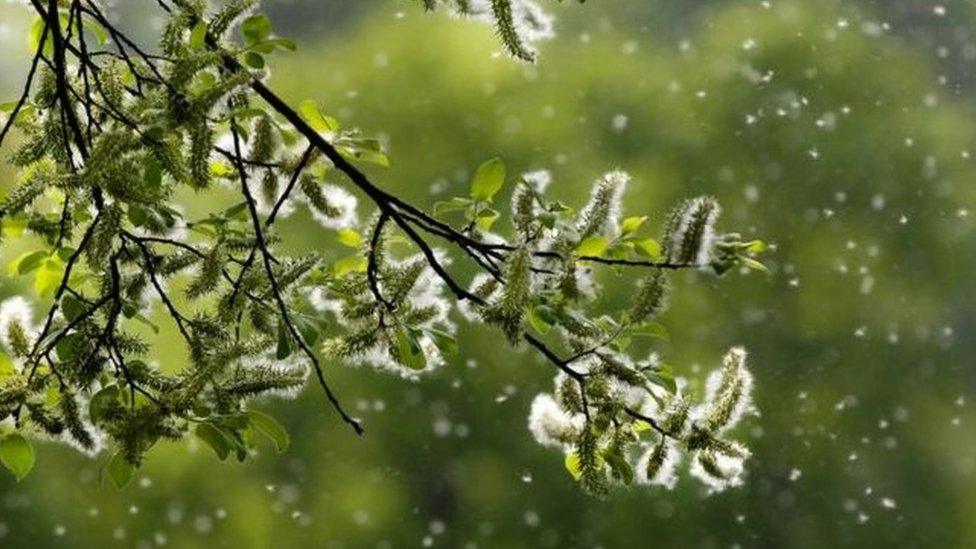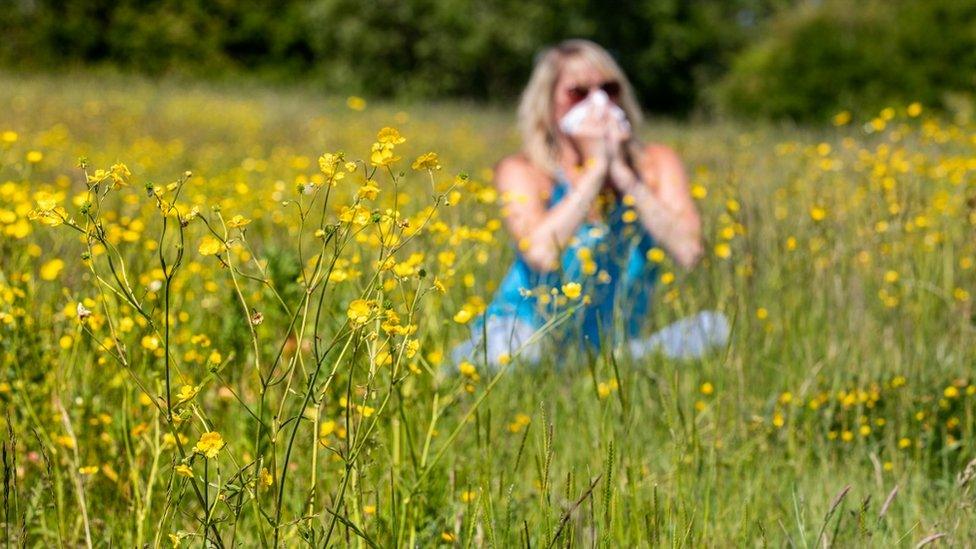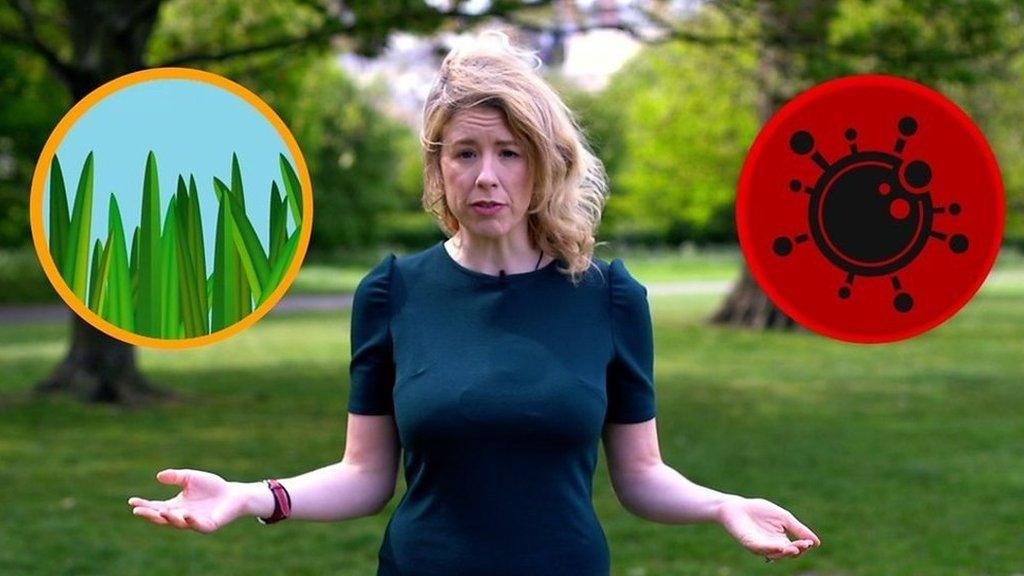Hay fever: Grass pollen DNA study could help sufferers
- Published

Trees, grass and weeds all produce pollen that can cause hay fever
The lives of hay fever sufferers could be changed thanks to research to identify which grass pollen causes the most common allergic reactions.
Aberystwyth and Bangor universities are studying pollen DNA to distinguish different types of the pollen.
They are examining it because even under powerful microscopes different kinds look identical. But some affects hay fever sufferers more than others.
And different grasses flower and release pollen at different times.
While it can last a long time, it disperses quickly so after a few weeks it is no longer present.
The researchers hope to identify which pollen causes the most common allergic reactions.
That would mean they could provide better information to hay fever sufferers.
Those grass species could then perhaps be avoided in fields, or grassland areas in schools and housing estates.
It is estimated there are about 13 million hay fever sufferers across the UK.
According to charity Allergy UK, people taking time off because of their symptoms costs the economy £7bn in lost productivity.
As well as the Welsh institutions, universities in Worcester and Exeter are involved and researchers are also working with the Met Office.

Prof Simon Creer is studying pollen DNA to distinguish between different types
They have deployed collection traps across the UK to capture what type of pollen is in the air at any given time.
They can then cross-reference that information with data from GP surgeries and hospitals.
That will show when people are accessing anti-histamines to combat hay fever and have more severe symptoms.
In future they hope weather forecasts will be able to include more detail about different kinds of pollen in the atmosphere.
Dr Gareth Griffiths, of Aberystwyth University's biological, environmental and rural sciences institute, said: "We can guess when pollen is being realised from seeing when the different grasses are flowering.
"But our data, where we've caught the pollen grains from the air and analysed their DNA, this tells us exactly what proportions there are of each type of grass, and also how that varies from north to south and east to west across the British Isles."

Collection traps have been deployed across the UK to capture pollen
Bangor University's Prof Simon Creer said: "If we can identify the species of grass that are contributing more to the allergenic load, then that informs us that we can try and avoid those species whenever possible.
"If we see a spike in a particular kind of pollen at the same time that hay fever is increasing, you can work out where the hot spots are, and which pollen is in that area."
Prof Creer said the research could extend to recommending to turf makers and grass seed producers which grass species are less associated with hay fever.
That could lead to advising developers to avoid them when building schools, hospitals or housing estates.
- Published20 April 2020

- Published12 February 2020

- Published16 September 2019
